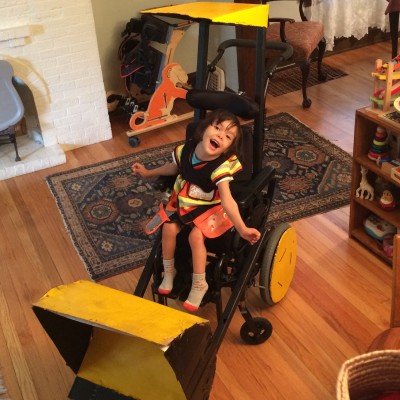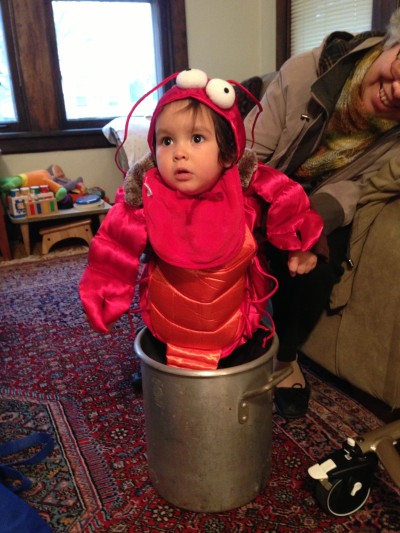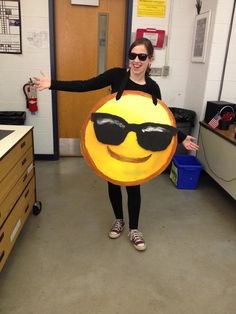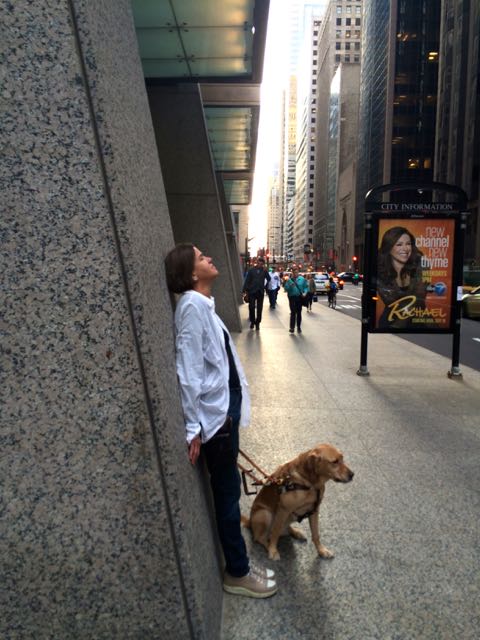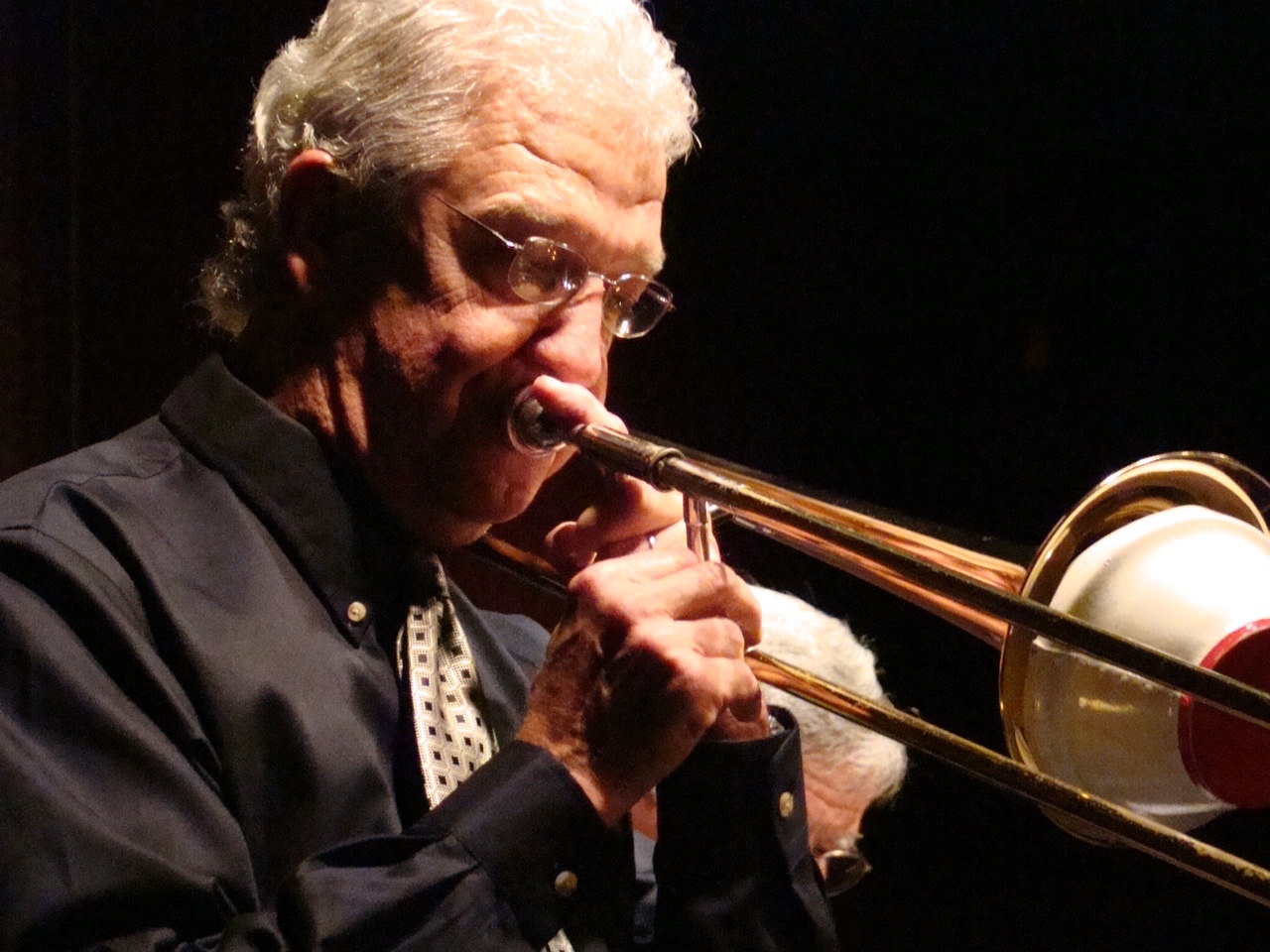This year she's a bulldozer
October 31, 2015 • 13 Comments • Posted in Blogroll, careers/jobs for people who are blind, guest blog, parenting a child with special needs, technology for people who are blind, UncategorizedI have a part-time job at Easter Seals Headquarters in Chicago. I’m the Interactive Community Coordinator there, which means I moderate the Easter Seals national blog. I keep my ear open for articles or issues that have something to do with disabilities, recruit interesting people to write blog posts about those things, edit the posts, add HTML code, and see to it that three posts are publish there every week.
Yesterday we published a post on the Easter Seals blog by Bernhard Walke, the Associate Principal at Cristo Rey Jesuit High School in Chicago’s Pilsen neighborhood. His wife Rosa teaches Spanish and English there, too, and they are the proud parents of 4-year-old Elena, who receives assistive technology services at Easter Seals DuPage and the Fox Valley Region. Bernhard’s post was heartwarming. So many readers gushed over the adorable photos of Elena in her costumes that I thought I’d reblog it here for our Safe & Sound readers to enjoy for Halloween today.
by Bernhard Walke
Halloween is a holiday that was never on my excitement radar as a child, nor my wife’s. Perhaps it was the cold finally arriving in the Midwest, the grim notion of existing in darkness for the next six months, having more of a salt tooth than a sweet tooth, or my hatred wearing masks that forced me to breathe my own humid expelled breath. Whatever the reason was, I never enjoyed it.
Until kids.
I work in a high school and have had the opportunity to chaperone the Halloween Dance year after year. Students walk in dressed as Mario and Luigi, Where’s Waldo, or Thomas the Train. One student actually dressed as Holden Caulfield toting a suitcase, a duck, and a red hunting cap. Teenagers demonstrate an infectious zeal and excitement at dances — especially when donning their zany costumes.
One year I was so inspired by the enthusiasm of these teenagers that I ran over to the neighboring drug store at the last minute, bought some dried chili peppers, pinned them to the chemistry teacher’s lab coat and voila! I was instantly Dr. Pepper for the evening. The creativity and enthusiasm demonstrated by my high school students inspired me to put my own creativity and ingenuity into my daughter’s Halloween costumes over the years. Early on Elena wasn’t able to sit independently, so many of her first costumes were designed knowing we’d be carrying her.
The creativity and enthusiasm demonstrated by my high school students inspired me to put my own creativity and ingenuity into my daughter’s Halloween costumes over the years. Early on Elena wasn’t able to sit independently, so many of her first costumes were designed knowing we’d be carrying her.
Her first costume was a lobster inauspiciously placed in a pot destined to be a tasty meal. You can imagine our delight (and Elena’s disdain!) when a parent showed up at our house dressed as a chef. Elena was not happy with my suggestion of running in the house to procure some lemon and butter. The fun we had with Elena’s lobster costume inspired us to come up with creative costumes ever since. Elena was so small that we could carry her door to door with ease.
When Elena was two years old, we decided she’d go as a bag of money: Rosa’s visiting aunt sewed pieces of green felt rectangles together to transform Elena into a bag of freshly pilfered cash. Rosa and I both dressed like cat burglars, and I was as giddy and excited as a student at the Halloween dance as the three of us trick-or-treated around our neighborhood that year.
Last year we signed up Elena for the annual September fashion show at Easter Seals DuPage and the Fox Valley Region. The theme was “Rock Around the Clock,” and Elena’s aunt quickly and enthusiastically volunteered to sew a poodle skirt. She even made a matching scarf so Elena didn’t have to wear her ever-present bib. She was such a hit at the fashion show that we reprised this costume for Halloween last year — she wore it to school and paraded her 50s costume around the hallways.
Between Elena’s weekly routine of physical therapy, occupational therapy, speech therapy, adaptive equipment, and mind-numbingly long meals, there are few things that are normal in our daughter’s life. Even other holidays can be difficult for her: she can’t tear open Christmas presents and perhaps Thanksgiving will present eating challenges. Halloween allows her and us parents to enjoy a holiday with the same childish excitement and silliness that our goofy and warm teenagers demonstrate.
Elena will be 5 on Monday and her elongated and lean body doesn’t necessarily lend itself to being carried around the neighborhood with ease anymore. She was in the DuPage and the Fox Valley Region Easter Seals fashion show again this year, and this year’s theme was “Come Build With Us.” We used a collection of cardboard, wood, duct tape, zippy ties, and obnoxious yellow construction paint to convert Elena’s wheelchair to a bulldozer. After a few nights painting, sawing, cursing, and imbibing a few beers, I transformed her wheelchair into a heavy-duty earthmover.
Elena’s costume was a huge hit when her two cousins pushed her down the runway, and we hope it will garner praise and attention as we parade it through our neighborhood this weekend. So, if you see a four-year-old girl in a wheelchair bulldozer this Halloween, feel free to give us a high five and a smile. Elena’s pretty good at those.
